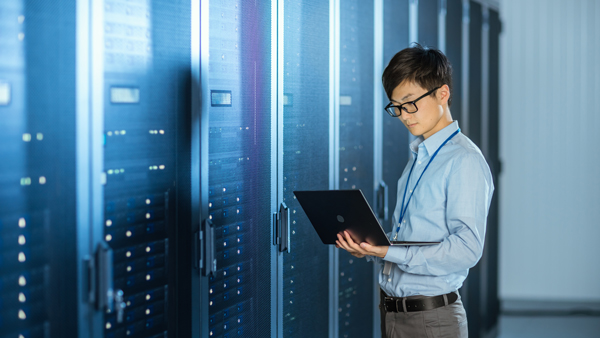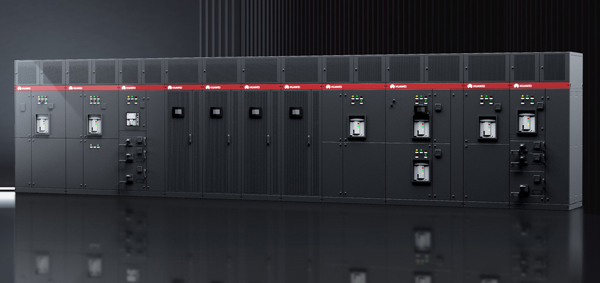DCIM Meaning & Implementation Guide for Businesses
DCIM Meaning & Features: Why Your Business Needs It
Businesses today depend on data centers to store, process, and manage crucial information. But keeping these data centers functioning optimally goes beyond just hardware — effective management is the key. This is where data center infrastructure management (DCIM) becomes crucial. DCIM helps organizations gain greater control over their infrastructure. Whether you operate a small IT setup or a large data center, understanding DCIM can enhance efficiency, reduce costs, and ensure more reliable operations.

What Is DCIM?
DCIM stands for data center infrastructure management. It integrates IT and facility management to optimize data center performance. It provides a comprehensive view of infrastructure, helping businesses monitor and manage IT equipment, cooling systems, power distribution units (PDUs), and energy consumption for improved efficiency and capacity planning. DCIM solutions can be deployed on-premises or in the cloud, offering flexibility for various business needs.
What Are the Components of DCIM?
DCIM consists of various components that support IT infrastructure and operational efficiency. Key elements include:
Asset Management
This component helps you track all the physical and virtual equipment in your data center. By having a clear picture of all assets, managers can ensure the right equipment is being used properly, avoiding inefficiencies and equipment failures.
Change and Workflow Management
Data centers are constantly evolving. This part of DCIM focuses on keeping track of changes including equipment upgrade and removal. It helps make sure everything happens in a structured way, preventing mistakes during transitions.
Real-Time Data Collection
With DCIM, data is gathered continuously from various sensors. This data is essential for monitoring how equipment is performing and ensuring the environment inside the data center stays optimal (e.g., temperature control). It's the foundation for smart decisions and quick responses.
Visual Dashboards
The sheer amount of data collected can be overwhelming, but dashboards present this data in a clear and easy-to-read format. This allows administrators to spot any issues instantly and take immediate action if something goes wrong.
Each component plays a vital role in making data center management smoother, helping businesses run efficiently, and ensuring everything works as it should.
What Are the Features of DCIM?
DCIM software comes with various features that help businesses manage their data centers efficiently. Some of the key features include:
1. Inventory Management
DCIM provides a detailed view of data center assets, their connections, and capacity. It helps businesses map out their infrastructure, track applications, and monitor hardware efficiently.
2. Process Management
Advanced DCIM tools offer intelligent system placement and process customization. Businesses can configure workflows based on specific needs, ensuring smooth operations and continuous improvements.
3. Mobile Access
With 24/7 mobile access, DCIM allows real-time monitoring of critical infrastructure. This enables businesses to quickly respond to equipment alarms, prevent downtime, and improve overall performance.
4. Site Management
DCIM collects and analyzes data on environmental conditions, power consumption, and critical infrastructure health. It helps businesses measure efficiency and optimize data center operations.
5. Power System Management
A comprehensive view of power distribution, from utility supply to rack-level power usage, enhances business continuity. DCIM tools forecast power consumption, aiding in risk assessment and IT deployment planning.
6. Thermal Management
DCIM tracks cooling system efficiency and ensures even heat distribution across IT devices. Features like 3D heat maps help businesses quickly detect and resolve thermal issues.

How to Get Started with DCIM in Your Business Effectively
Implementing DCIM in your business should be a strategic process. Here's how you can get started effectively:
1. Start Small & Scale Gradually
Businesses should implement DCIM in phases. Begin with essential functions like asset management and gradually expand to advanced features such as capacity planning and power monitoring.
2. Consider Future Technology
A strictly reactive approach to data center management is not enough. Businesses should look into predictive solutions like Data Center Management as a Service (DMaaS), which leverages large-scale data analytics to enhance facility operations.
3. Choose the Right DCIM Provider
Select a vendor with extensive experience in the data center industry. A provider with a global reach and strong service networks ensures seamless on-premise and remote DCIM management.
4. Regularly Update & Optimize
DCIM is an evolving technology. Businesses should periodically review and adjust their strategies to align with changing requirements and industry standards.
5. Collaborate with Experts
Working with a trusted DCIM provider ensures that businesses get the best support for optimizing infrastructure and achieving long-term operational goals. Integrating smart technologies like Huawei Smart Power Supply can help streamline energy management and reduce costs as you scale.
Conclusion
Embracing DCIM in your business can lead to smarter and more efficient data center management. With the right tools, you can monitor infrastructure, optimize resources, and prevent costly downtime. As technology evolves, staying ahead with a solid DCIM strategy ensures long-term success. Whether you're upgrading an existing system or starting fresh, investing in DCIM is a step toward better performance and reliability. The future of data management is here — make sure your business is ready for it.
FAQs
What is the full name of DCIM?
DCIM stands for data center infrastructure management. It is a system that helps businesses monitor, manage, and optimize their data center operations. DCIM combines IT and facility management to improve efficiency, reduce costs, and prevent downtime. It provides real-time insights into power usage, cooling, space utilization, and overall infrastructure health.
What is the purpose of DCIM?
The main purpose of DCIM is to improve the efficiency and reliability of data centers. It helps businesses track energy consumption, manage hardware, optimize space, and prevent failures. With DCIM, companies can monitor operations in real time, make better decisions, and reduce costs while ensuring their IT infrastructure runs smoothly and without disruptions.
Is DCIM only for large-scale data centers?
No. DCIM is useful for businesses of all sizes. While large-scale data centers benefit greatly, small and medium-sized businesses can also use DCIM to manage resources, improve efficiency, and reduce costs. Whether you have a small IT setup or a large facility, DCIM helps maintain better control over infrastructure and ensures smooth operations.



 Search
Search
 EN
EN









